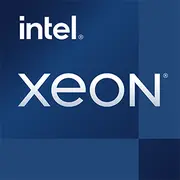Intel Xeon E3-1505M v6

インテル Xeon E3-1505M v6: ハイブリッドワーク時代のプロフェッショナル向けプロセッサ
2025年における機能、使用シナリオ、関連性の分析
アーキテクチャとプロセス技術: 信頼性の基盤
コードネームと技術
インテル Xeon E3-1505M v6プロセッサは、2017年にKaby Lakeアーキテクチャ(14nm)で発売され、モバイルワークステーション向けのニッチなソリューションとして位置付けられています。年数が経過しているにもかかわらず、安定性や専門的機能が求められるタスクに対しては、その主な特徴は今でも関連性が高いです。
コア、スレッド、周波数
- 4コア / 8スレッド(Hyper-Threadingによる)
- ベース周波数: 3.0 GHz、ターボモードでの最大周波数: 4.0 GHz(単一コアの場合)
- 内蔵グラフィックス: Intel HD Graphics P630、ベース周波数350 MHz、動的オーバークロックで最大1.1 GHz。
アーキテクチャの特徴
- ECCメモリのサポート—データエラーが許されないワークステーション(例: レンダリングや科学計算)には重要です。
- 企業向けセキュリティのためのvProおよびTrusted Execution技術。
- マルチスレッドシナリオでのパフォーマンスを向上させる8MBのL3キャッシュ。
エネルギー消費とTDP: 力とバッテリー寿命のバランス
プロセッサのTDPは45Wで、パフォーマンスの高いモバイルCPUとしては典型的ですが、2025年にはAMD Ryzen 7000/8000(5~6nm)やApple M3(3nm)の15〜28WのTDPと比較して高く感じられるでしょう。
これがユーザーに意味することは?
- このプロセッサを搭載したノートパソコンは、効率的な冷却システム(2つのファン、銅パイプ)を必要とします。
- コンパクトな筐体(例えば、ウルトラブック)では、長時間の負荷下でサーマルスロットリングが発生する可能性があります。
パフォーマンス: テストと実際のタスク
Geekbench 6での評価:
- シングルコア: 1244 — Intel Core i7-7700HQのレベル。
- マルチコア: 3856 — Ryzen 5 5500U(6コア、15W)と同等。
オフィスワークとマルチメディア
- Chromeで20以上のタブを開きながら、Office 365使用中にPremiere Proで動画のバックグラウンドレンダリングを行った場合、プロセッサは処理できますが、長時間の負荷では温度が85~90°Cに達します。
- VLCやYouTubeでの4K動画再生では、iGPUの負荷が70~80%になり、滑らかな再生が可能です。
ゲーム
- CS2: 720p、低設定 — 60–70 FPS。
- Cyberpunk 2077: 720p、最低設定 — 25–30 FPS(DLSS/FSRなし)。
結論: ゲームにはプロセッサがやや弱いですが、要求が少ないプロジェクトやクラウドサービスを介したストリーミングには適しています。
ターボブーストモード
短時間の負荷(例: AutoCADで重いプロジェクトを開く)では周波数が4.0 GHzに上昇しますが、20〜30秒後には過熱により3.5 GHzに低下します。
使用シナリオ: Xeon E3-1505M v6は誰に適しているのか?
1. エンジニアとデザイナー:
- SolidWorks、AutoCAD — ECCメモリのサポートにより失敗のリスクが最小化されます。
- Keyshotでのレンダリング — 4コアは小規模プロジェクトには十分です。
2. IT専門家:
- ローカルサーバー、仮想化(VMware、VirtualBox) — vPro技術によりリモート管理が簡単に。
3. フォトグラファーとビデオグラファー:
- Lightroom、DaVinci Resolve — 1080pの編集にはプロセッサが対応できますが、4Kには専用GPU(例: NVIDIA Quadro)が必要です。
誰に適していないか?
- ゲーマー: Ryzen 7 7840HSとRTX 4060を搭載したノートパソコンの方が良いです。
- バッテリー寿命を重視するユーザー: Apple M3やIntel Core Ultra 7を搭載した最新のウルトラブックは、1.5~2倍長く動作します。
バッテリー寿命: ノートパソコンはどれくらい持続するか?
典型的な負荷(ブラウザー、オフィスアプリ)での:
- バッテリー56W·hのノートパソコン — 4~5時間。
- 参考: Core Ultra 7 155Uを搭載したDell XPS 13(2025年) — 最大12時間。
省エネルギー技術
- Intel SpeedStep — 動的周波数管理。
- C-States — 未使用コアのシャットダウン。
しかし、14nmのアーキテクチャは現代のチップよりも効率が劣ります。
競合との比較
AMD Ryzen Pro 5755G(2023年)
- 6コア/12スレッド、7nm、TDP 35W。
- Geekbench 6 マルチコア: ~5200。
- メリット: パフォーマンス対エネルギー消費のバランスが良い。
Apple M2(2024年)
- 8コア(4+4)、5nm、TDP 20W。
- Geekbench 6 マルチコア: ~8900。
- メリット: 画期的なバッテリー寿命、macOSとの統合。
Intel Core Ultra 7 165H(2025年)
- 16コア(6+8+2)、Intel 4nm、TDP 28W。
- Geekbench 6 マルチコア: ~12500。
- メリット: ニューラルネットワークタスク用のAIアクセラレーター。
結論: Xeon E3-1505M v6はパフォーマンスや効率で劣りますが、ニッチな機能(ECC、vPro)では優れています。
利点と欠点
長所:
- ECCメモリのサポート — プロのタスクに対する信頼性。
- 長時間の負荷に対する高い安定性。
- Windows 10/11およびLinuxとの互換性。
短所:
- 古くなった14nmプロセス。
- 高いエネルギー消費。
- シングルコア性能の制限(Core Ultra 7に比べて30%低い)。
ノートパソコン選びの推奨事項
デバイスタイプ:
- モバイルワークステーション: Dell Precision 5520、HP ZBook 15 G4。
- プレミアムビジネスノートパソコン: Lenovo ThinkPad P51。
注目すべき点:
1. 冷却: 最低2つのファン。
2. RAM: ECC付き32GB DDR4。
3. 画面: デザイン用の100% sRGBカバーのIPSパネル。
4. ポート: 外部GPU接続用のThunderbolt 3。
2025年の価格:
- Xeon E3-1505M v6を搭載した新しいノートパソコンは稀ですが、残り物は$1200–$1500(例えば、Quadro M1200を搭載したDell Precision 5520)で見つけることができます。
最終結論: プロセッサは誰に適しているか?
インテル Xeon E3-1505M v6は、2025年において特定の専門家にとって有力な選択肢です。重視すべき点は以下の通りです:
- 信頼性: ECCメモリと企業向け機能。
- 互換性: 認証されたコンポーネントを必要とする特殊なソフトウェアとの作業。
- 予算: 中古市場で$600–$800でノートパソコンを購入することが、一時的なソリューションとして適しています。
代替案:
- 大多数のユーザーには、Ryzen 7 Pro 7840UやIntel Core Ultra 7を搭載したノートパソコンを選ぶ方が望ましいです — より速く、より低いエネルギー消費です。
もしあなたが重要なデータを扱うエンジニアや、セキュリティを重視するIT管理者であれば、Xeon E3-1505M v6はまだ価値を持つでしょう。それ以外の場合は、過去に戻る一歩となるかもしれません。
基本
CPUの仕様
メモリ仕様
GPUの仕様
その他
ベンチマーク
他のCPUとの比較
ソーシャルメディアで共有する
または当サイトへのリンクを追加
<a href="https://cputronic.com/ja/cpu/intel-xeon-e3-1505m-v6" target="_blank">Intel Xeon E3-1505M v6</a>